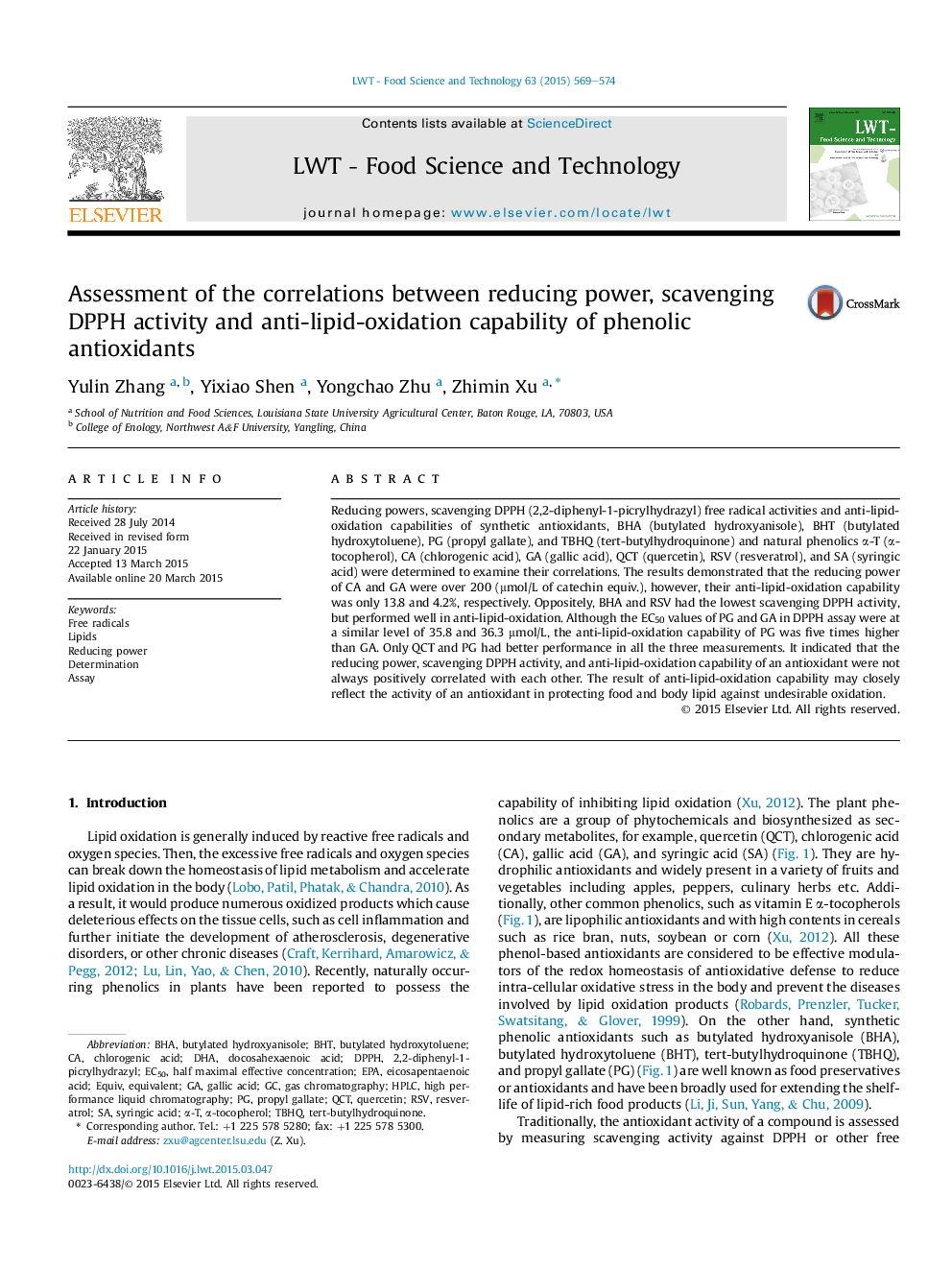| Article ID | Journal | Published Year | Pages | File Type |
|---|---|---|---|---|
| 6402151 | LWT - Food Science and Technology | 2015 | 6 Pages |
â¢No correlation between reducing power, DPPH scavenging and anti-lipid-oxidation.â¢Polyphenolics are better than phenolic acids in inhibiting lipid oxidation.â¢Accessibility of antioxidant to lipid is critical to anti-lipid-oxidation capability.â¢The capability reflects activity of inhibiting undesirable lipid oxidation in body.
Reducing powers, scavenging DPPH (2,2-diphenyl-1-picrylhydrazyl) free radical activities and anti-lipid-oxidation capabilities of synthetic antioxidants, BHA (butylated hydroxyanisole), BHT (butylated hydroxytoluene), PG (propyl gallate), and TBHQ (tert-butylhydroquinone) and natural phenolics α-T (α-tocopherol), CA (chlorogenic acid), GA (gallic acid), QCT (quercetin), RSV (resveratrol), and SA (syringic acid) were determined to examine their correlations. The results demonstrated that the reducing power of CA and GA were over 200 (μmol/L of catechin equiv.), however, their anti-lipid-oxidation capability was only 13.8 and 4.2%, respectively. Oppositely, BHA and RSV had the lowest scavenging DPPH activity, but performed well in anti-lipid-oxidation. Although the EC50 values of PG and GA in DPPH assay were at a similar level of 35.8 and 36.3 μmol/L, the anti-lipid-oxidation capability of PG was five times higher than GA. Only QCT and PG had better performance in all the three measurements. It indicated that the reducing power, scavenging DPPH activity, and anti-lipid-oxidation capability of an antioxidant were not always positively correlated with each other. The result of anti-lipid-oxidation capability may closely reflect the activity of an antioxidant in protecting food and body lipid against undesirable oxidation.
